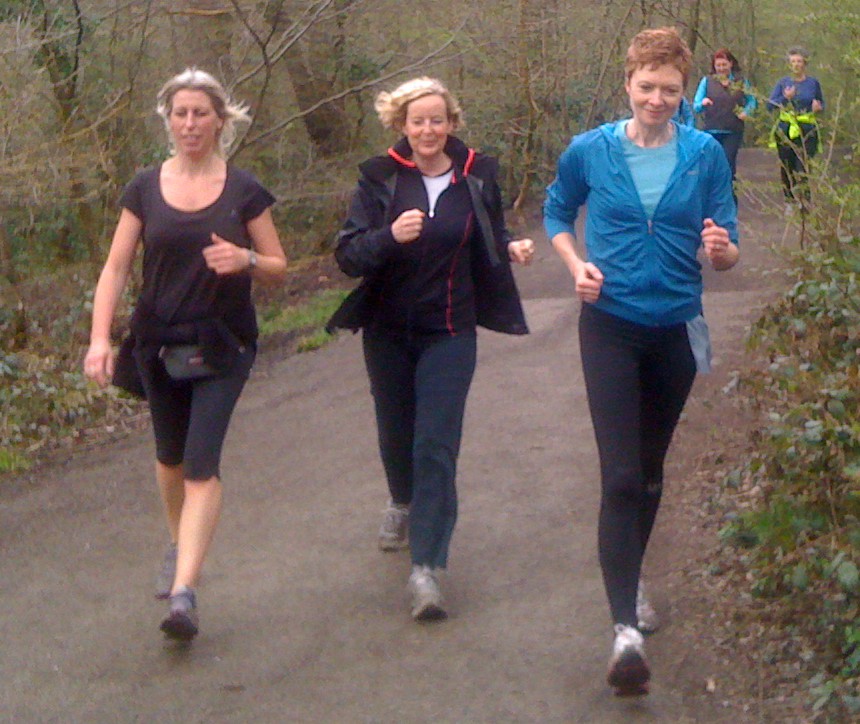TECHNIQUE TIPS FOR SUCCESSFUL POWERWALKING
T he foundation of Powerwalking is good posture. The spine should be elongated by standing straight, tall and relaxed, whilst tucking your bottom under body and keepings abs engaged. Use gravity to propel you forward with a moderate lean forward from the ankle.
he foundation of Powerwalking is good posture. The spine should be elongated by standing straight, tall and relaxed, whilst tucking your bottom under body and keepings abs engaged. Use gravity to propel you forward with a moderate lean forward from the ankle.
POWER WALKING FORM
- Head. Your head should be in a neutral position (chin parallel to the ground), looking neither up nor down. Keep your eyes focused about 15 meters in front of you.
- Shoulders. Your shoulders should be back and down away from your ears. As you get tired, check to make sure you haven’t started to hunch or shrug your shoulders.
- Chest. Your chest should be open and lifted from the waist. As you walk, imagine a string attached to the top of your head that’s pulling you skywards. This will keep your back straight and your chest open for optimal breathing.
- Abdominals . Pull in your abs (think naval to spine) to support your lower back and tighten your bottom. Imagine you are holding a £50 note between the cheeks of your bottom. Contracting your abdominal and pelvic floor muscles levels the pelvis, which helps build strong core muscles. This helps build a flatter tummy and stronger back.
- Arms. Keep the elbow bent at a 90 degree angle by your side (almost brushing your hips with each step). Your legs will follow the pace set by your arms. It is the back swing that creates the engine with which to drive the quicker leg action. Only bring the hands as far as the chest and move your arms like a pendulum. Try to avoid clenching your fists, which will create tension through the arms, shoulders and chest.
- Leg stride. Once you have your natural stride length set, you can walk faster by reducing your stride and taking quicker, not longer, steps. Walk as though your legs start from the waist and really extend your legs from the hips. To facilitate the quicker leg movement, it is likely that the pelvis will rotate more at the quicker speed and tight stride width. This is natural. Don’t exaggerate this move as it may strain the lower back.
- Foot action. Try to land on the heel of your foot and then transfer the weight down the outside of the sole to the ball of the foot. The ankle should be flexed with toes pointed upward at about 45 degrees. As the body’s weight passes over the leading leg, the foot should roll forward and push off from the toes to begin the next step. Really use your toes to push off with to give your step a little more punch. With the quicker leg speed, the toes of the front foot will need to be pulled up to the shin more (dorsiflexion). This prevents the toe dragging as the leg comes through. This extra toe-lift may lead to tension in the shin muscle. Avoid lifting your other foot until the big toe on your forward foot has landed firmly on the ground. The foot placement should be in front of the body, as if almost walking along a straight line.
- Forward Lean. As you walk quicker, the natural tendency is to lean forward from your ankle (not waist) and the impact is transmitted through the natural curve of the spine. As you lean, gravity pulls you forward and your feet will land underneath you.
- Breathing. Breathe in rhythm with your stride from your diaphragm, not your chest. Keep it relaxed. Breathe in for two counts through your nose and out for two counts through your mouth.
- Relax your body and Focus your mind. Keep every part of your body relaxed, except for the abs and bottom which are ‘engaged.’ Focus straight ahead and let the energy flow through your body from your core (body’s centre). Focusing your mind will keep it from wandering and help it relax.
